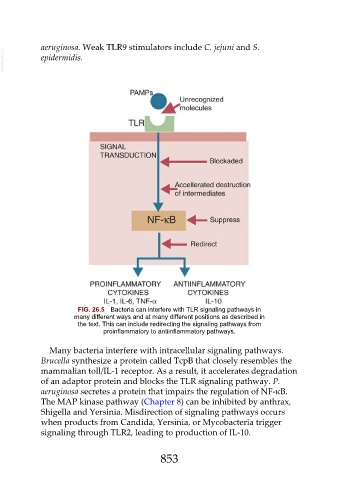Page 853 - Veterinary Immunology, 10th Edition
P. 853
aeruginosa. Weak TLR9 stimulators include C. jejuni and S.
VetBooks.ir epidermidis.
FIG. 26.5 Bacteria can interfere with TLR signaling pathways in
many different ways and at many different positions as described in
the text. This can include redirecting the signaling pathways from
proinflammatory to antiinflammatory pathways.
Many bacteria interfere with intracellular signaling pathways.
Brucella synthesize a protein called TcpB that closely resembles the
mammalian toll/IL-1 receptor. As a result, it accelerates degradation
of an adaptor protein and blocks the TLR signaling pathway. P.
aeruginosa secretes a protein that impairs the regulation of NF-κB.
The MAP kinase pathway (Chapter 8) can be inhibited by anthrax,
Shigella and Yersinia. Misdirection of signaling pathways occurs
when products from Candida, Yersinia, or Mycobacteria trigger
signaling through TLR2, leading to production of IL-10.
853

